Last year I helped organize the first Maker STEAM Festival at the Coyote Grange Hall, which went better than I was expecting, given we almost canceled it entirely as the Delta wave hit and crested something like a month before the event date. Elise is planning to run it again this October, and I’m looking forward to the last couple planning meetings not being about whether we should even run the event at all.
Anyway. My goal for the event was to create something to pull in kids who weren’t necessarily traditional robot fans, I wanted to hook the artists, dreamers and musicians. So, no cars, no battle bots. Something art-ier and cute, but that still had something to teach about programming and robotics. So, no robots masquerading as fuzzy animals for people to pet. (Not that I don’t love all of those things.)
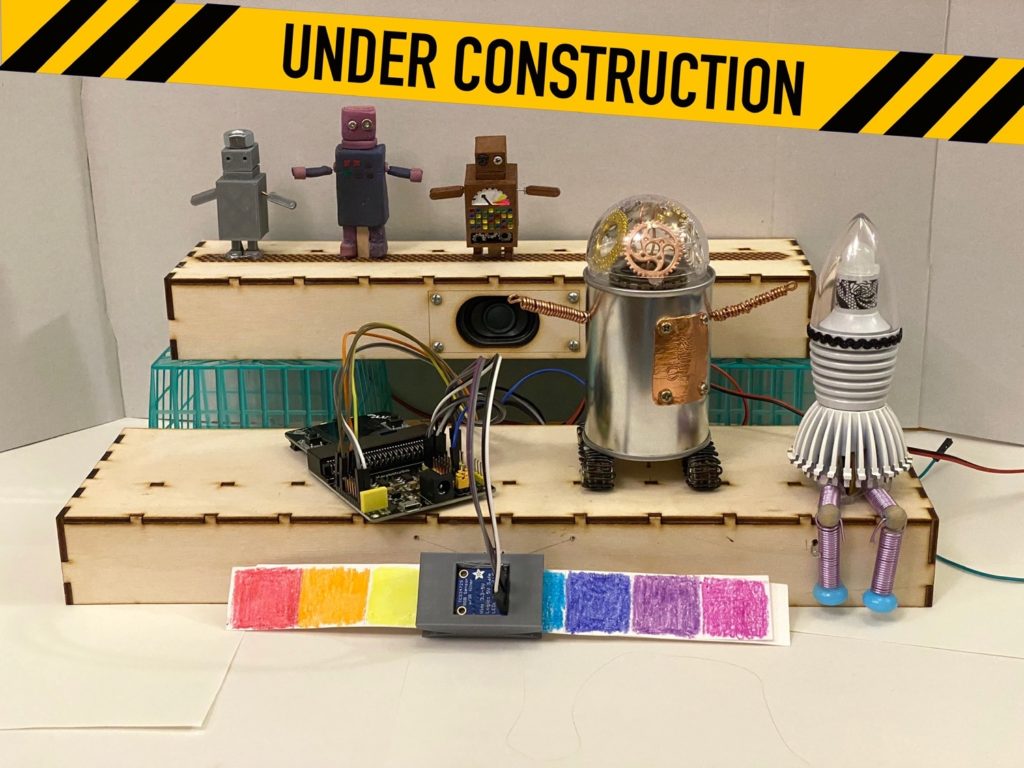
I thought about music boxes and punch cards, bubble sheets that you fill in with #2 pencils and color. What I came up with was a three tiered (very small) robot choir, that turned out to be a little too ambitious for the deadline. I got it fully functional, but there were still quite a few holes in the choir. I told the kids we were still auditioning singers, and they nodded, sure, totally reasonable.
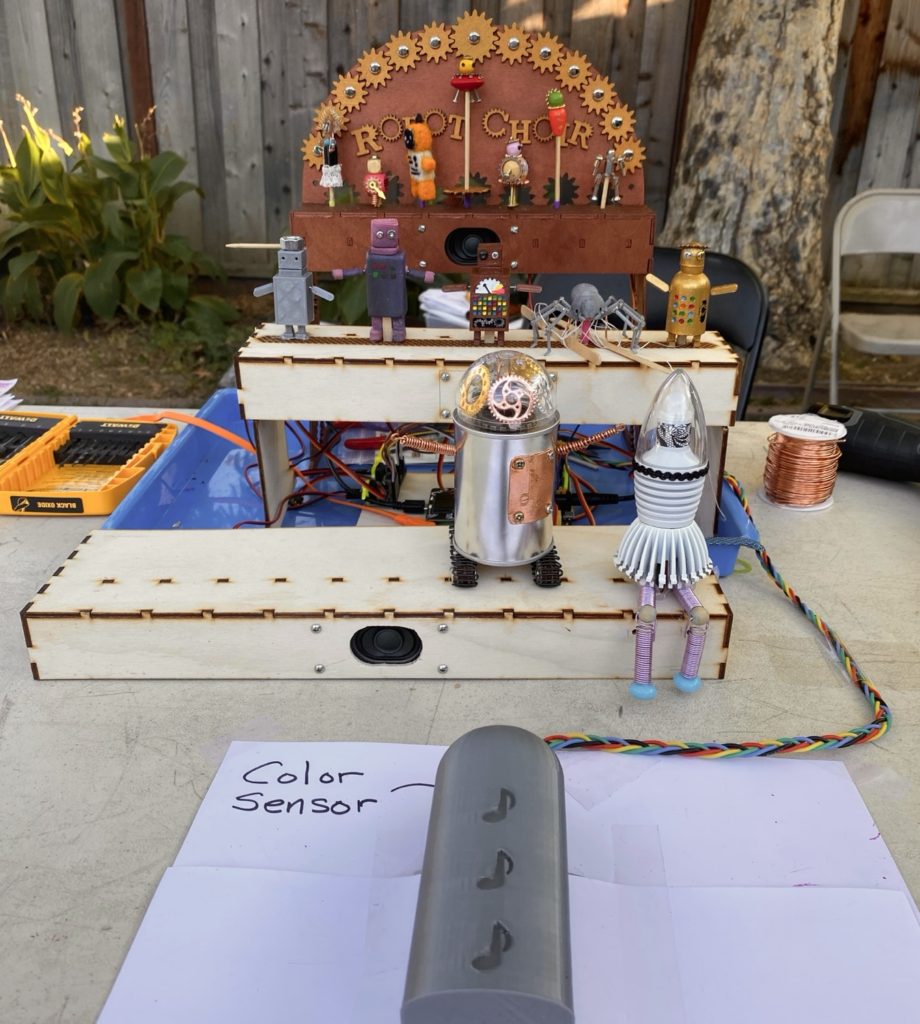
By the time of the event I did have choir members on each of the three tiers, all three color sensors were calibrated and working, and all of the speakers and amps were hooked up and working. The paint job may have been only 1/3 done, and there may have been some power draw issues… But I turned those problems into conversation starters with kids.
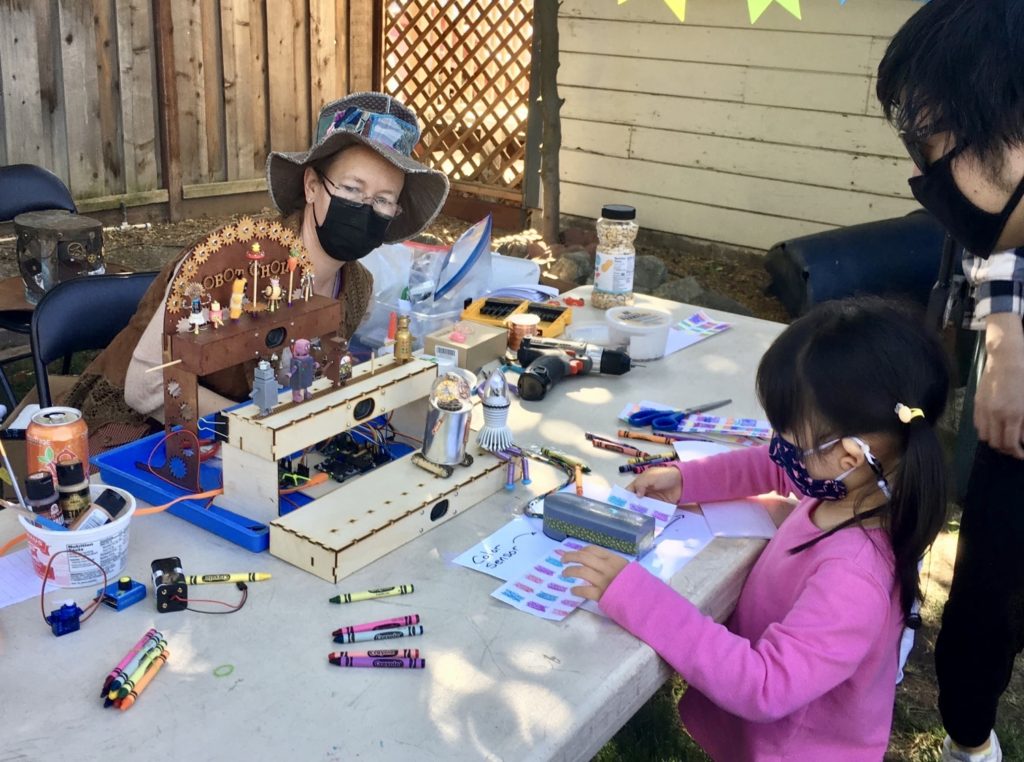
It was pretty frustrating for me personally that the microcontroller was occationally rebooting when people pushed their music through the sensor, but it turned into a great show for the kids. They got to help me figure out what conditions were triggering the reboot, and see what real engineering looks like, which is really why we do this.
The problem turned out to be that when the choir got the signal for all three tiers to sing a note at exactly the same time, all the servos would try to move at the same time, and that was pulling the microcontroller power supply voltage too low, causing it to reboot. Fixable, and once we knew what the problem was we could work around it.
You can see in the video, the basic idea is that you color in a grid to create music and control the robots. Each of the rows of cells represents one octave of notes for one of the tiers of robots, bass, mid-tone and treble. There is a speaker for each tier, and the different tiers have different voices I created using an 8 harmonic additive synth model. Each tier can only ‘sing’ one note at a time, each tier in its own octave. Three note polyphony would make a terrible keyboard, but it is enough for robots to sing chords.
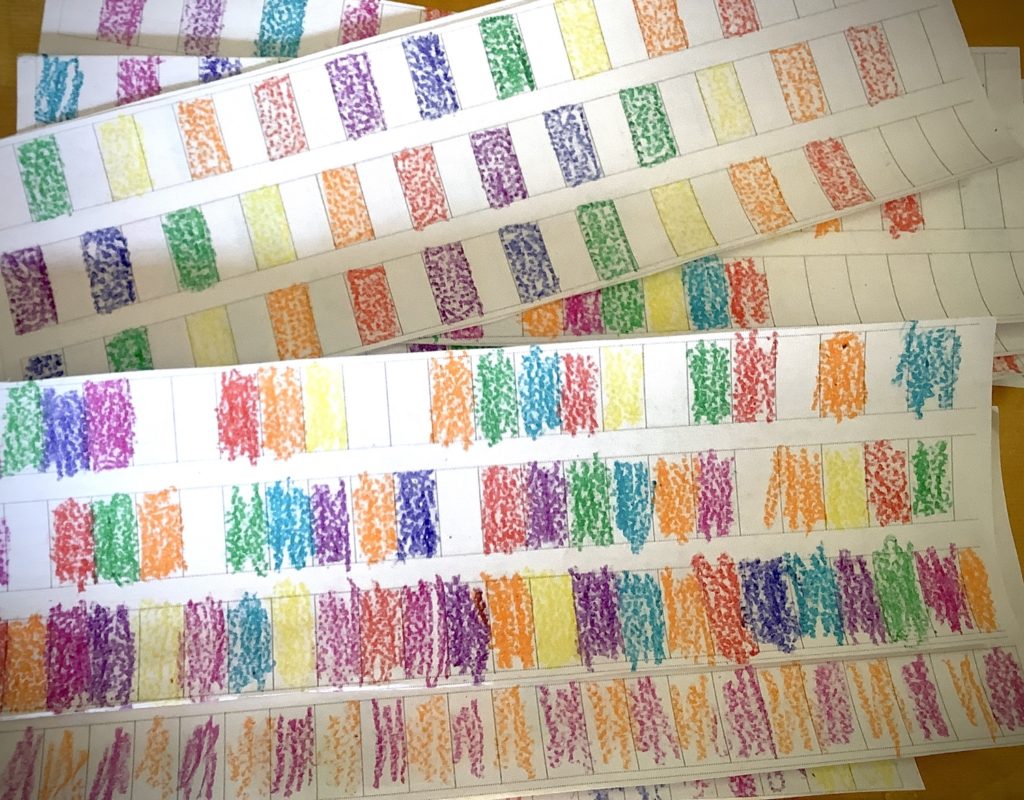
One thing I am surprisingly happy with is the design for the music sheets. They are easy for kids to create, and they squeeze three degrees of freedom (color=note pitch, horizontal=time, vertical=robot tier) onto a piece of paper, so there is a lot to play with. Originally I was planning on having a feed mechanism, but I decided that it was more interesting to be able to pull the sheet through yourself, change speed, and go forward and backwards as you want. And you can even rotate them, they work just as well upside down. So much room for free exploration.
Which kind of leads into my pet peeve, and something I still need to figure out some more strategies for: the aggressive parents who force their kids to play with my stuff because it’s educational. These parents will come up to the table, figure out what’s going on, explain to their kid exactly what they need to do, and then force them to sit there and do it. Way to suck all the joy out of hands on learning. For kids to get the most out of the experience, it’s best to engage their natural curiosity by not explaining everything, just encouraging them to try stuff and see what happens. Limited instructions or hints on how to get started can make things less intimidating, but don’t spell out exactly what to do, and what the outcome will be. It’s pretty depressing to see a kid walk up, follow step by step instructions, ticking the box for their parents, but never actually thinking about what’s going on, or how anything works. Grrrr.
But, on a happier note, this month I unpacked everything from the box I stuffed it in after the fair and finally got robot spider kind of working. At the fair there was a girl who wanted to see me finish the spider, but with everything else going on all I got done was a snarl of marionette dental floss. At home without a constant stream of interruptions I finally got all the dental floss untangled (okay, I cut it out and started over from scratch), and got robot spider dancing. Still need to rebalance the leg tension somehow…. And then I get to build some of the larger more interesting robots for the bass tier, I’m looking forward to that!
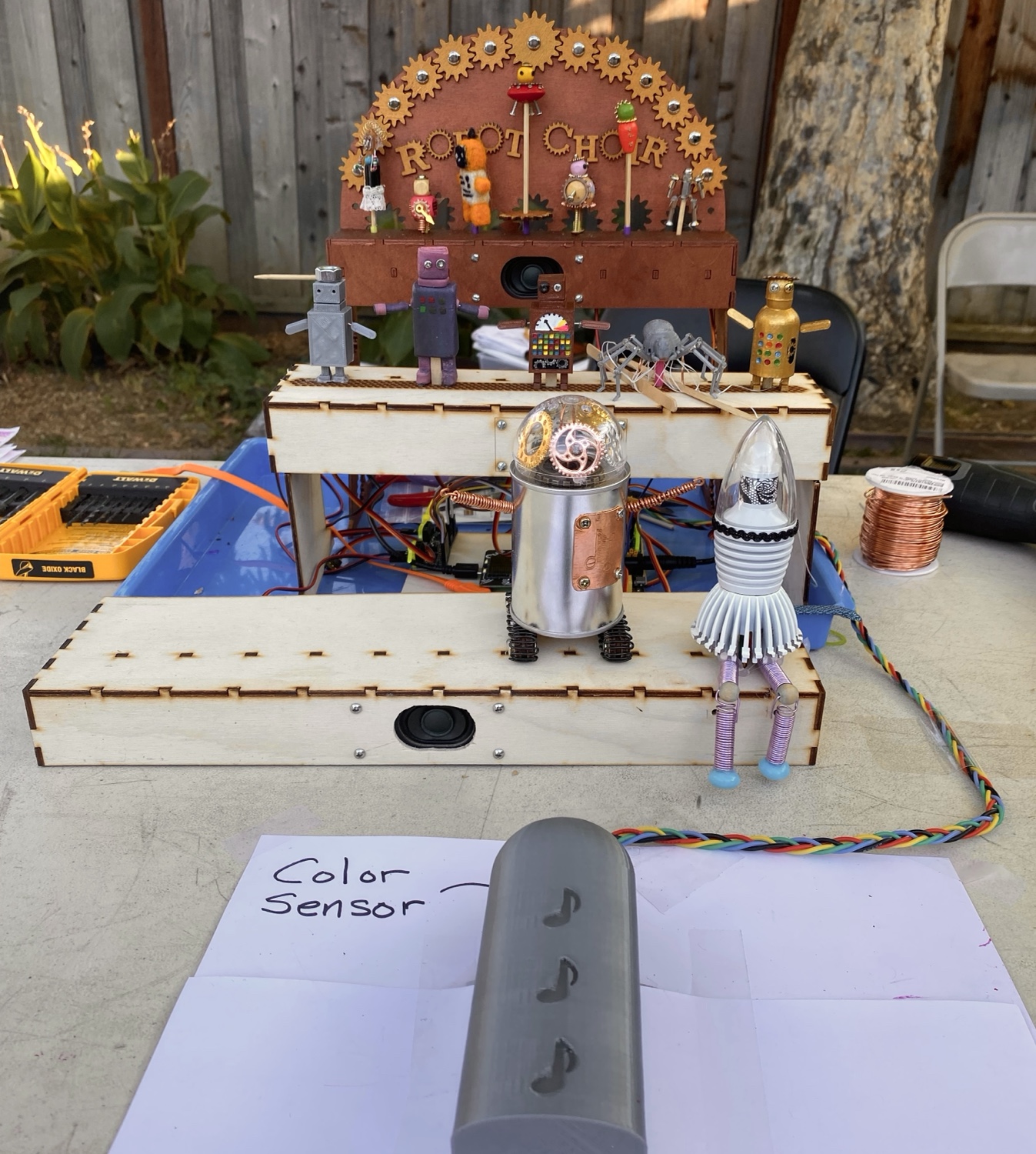
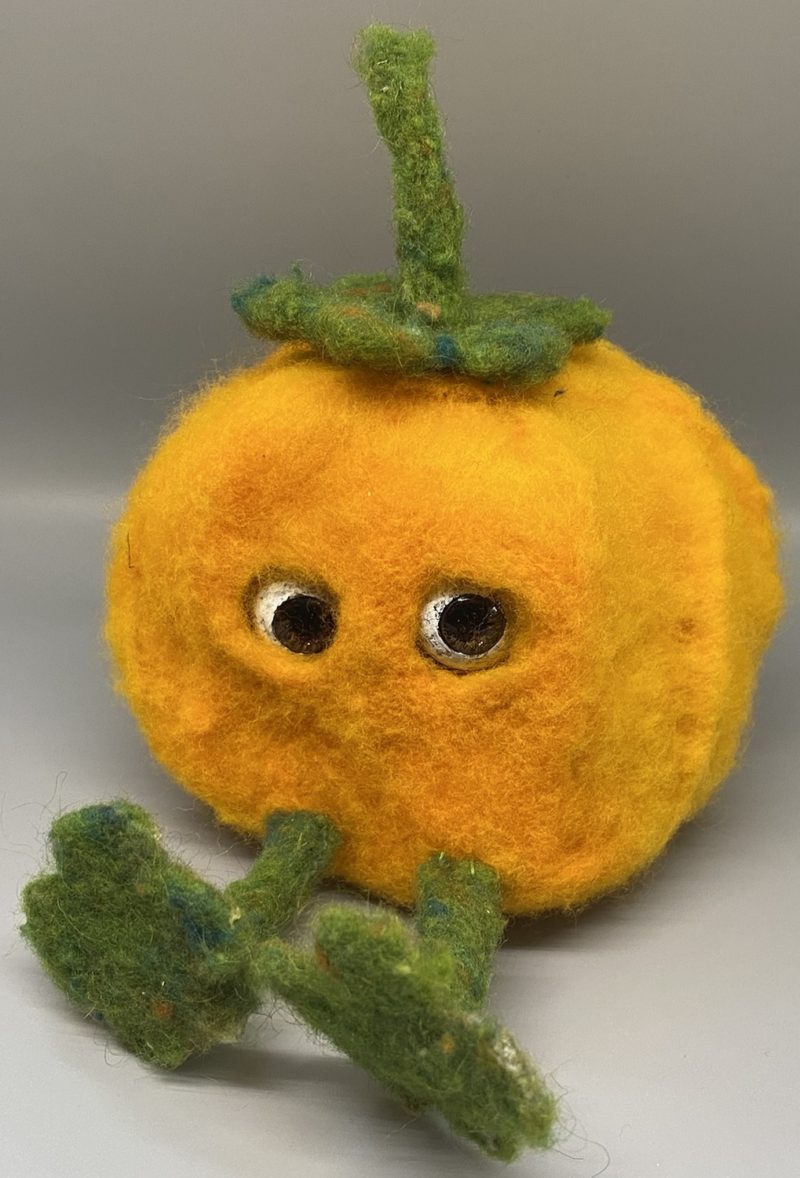
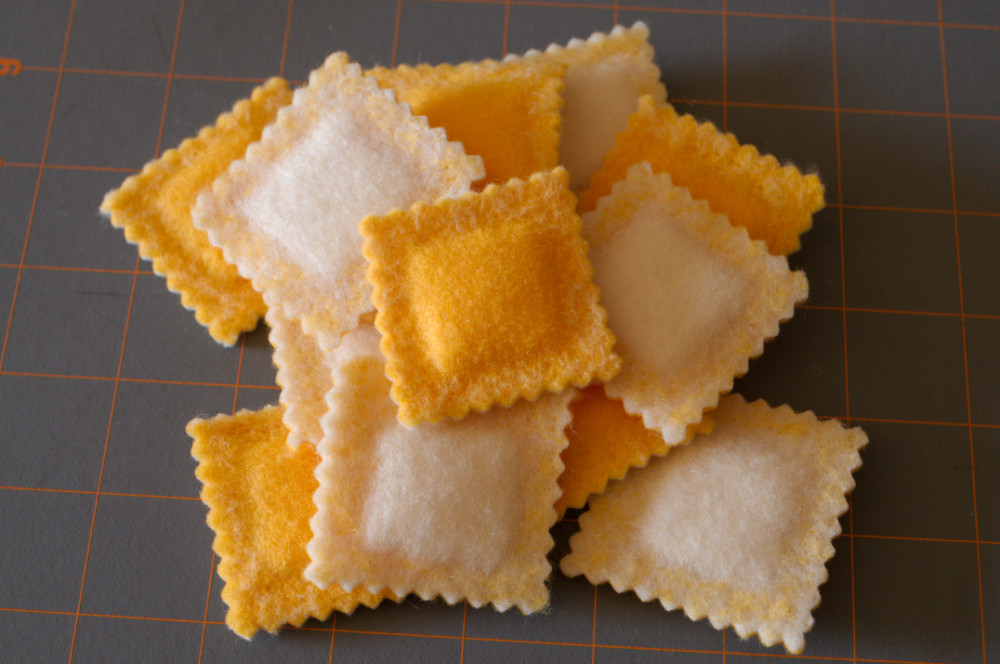

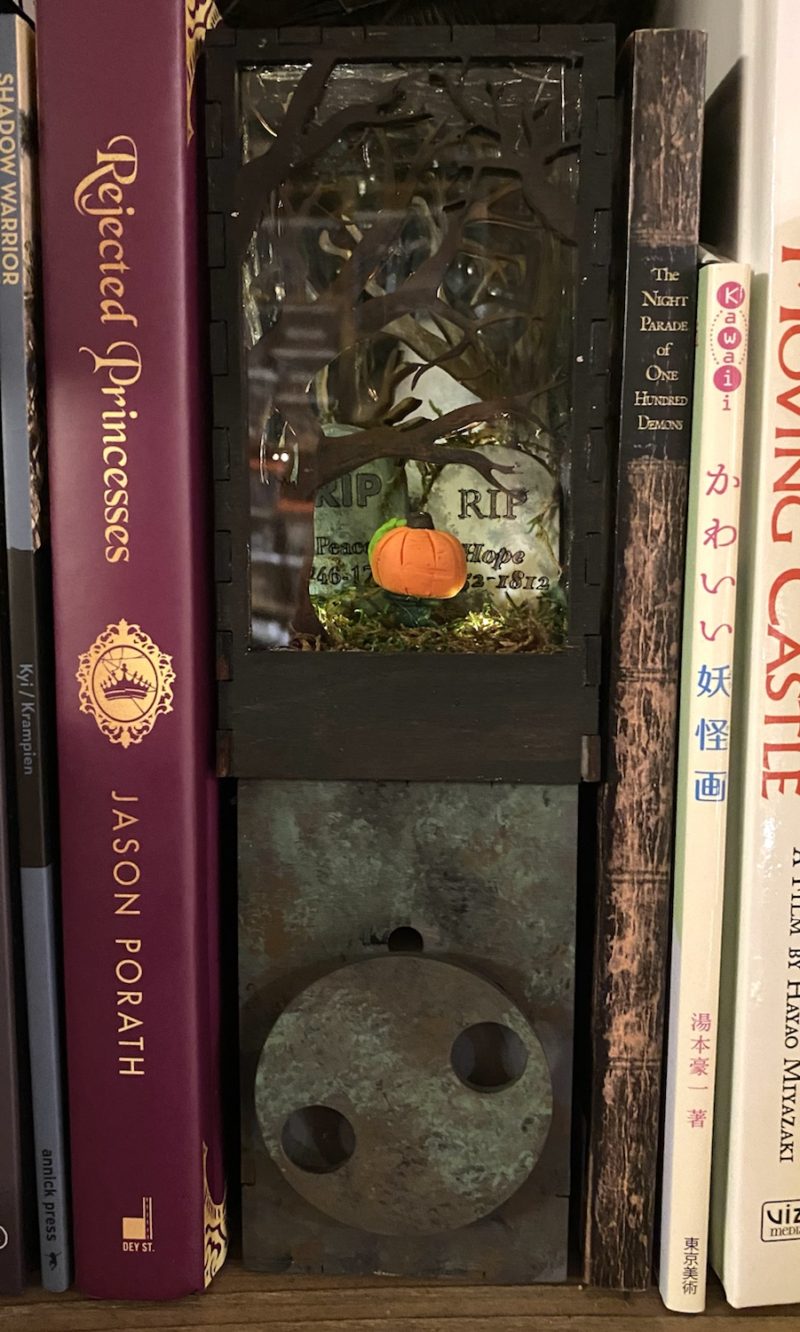
3 Comments
Add Yours →This is the coolest thing in the world! I hope to see it in person one day. I am endlessly impressed by the cool stuff you make.
Aw, thanks. When you guys are down here, or if I notice a maker Faire in Seattle I’ll happily demo anything for you guys. This thing does still need a lot of work though.
Found your blog on Pinterest— the tiny chair post from 2011 (?). My goodness, dear, you are one brilliant woman! I made fairy homes for my girls back in the 80s but my efforts pale in comparison to your genius. Not that we didn’t have fun, you know. Just that your projects are so clever. And ROBOTS! Wow. I know you’re busy yet you really should post again here. Your writing skills impress as much as your projects. Carry on!